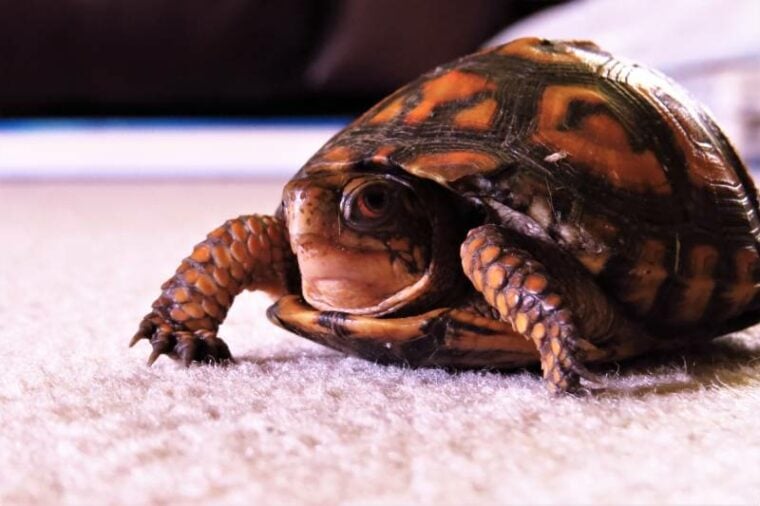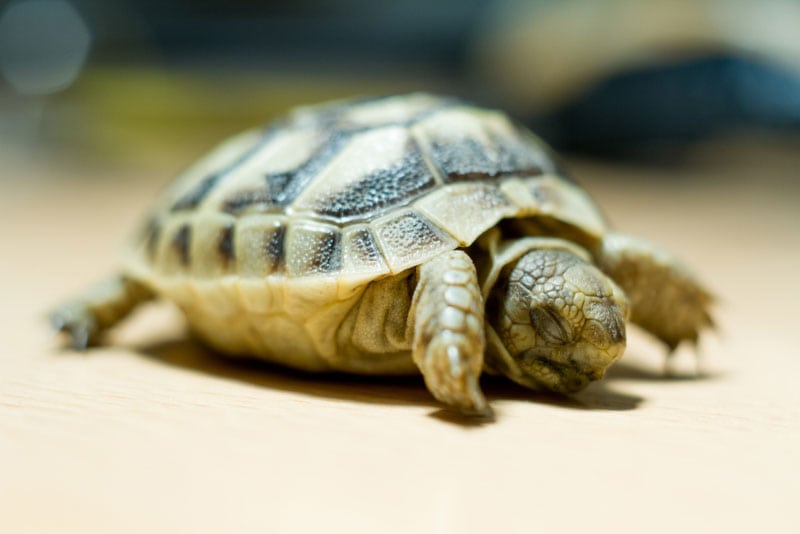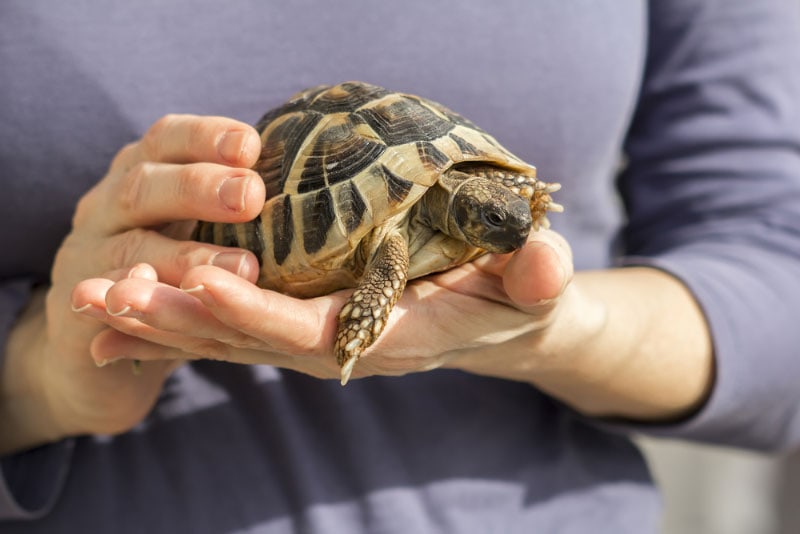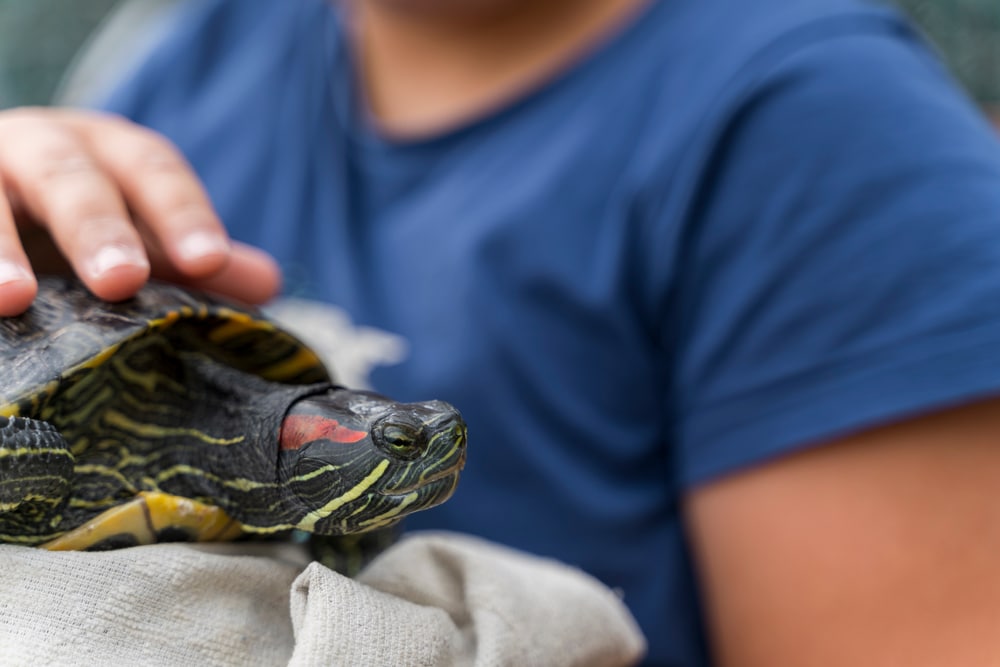
Click to Skip Ahead
There are hundreds of species of Turtles, including aquatic and terrestrial Turtles. The group Tortoises as well as Terrapins, and, like all reptiles, they are cold-blooded. Cold-blooded animals are unable to maintain their own body temperature and they must get warmth from their environment. As such, while Turtles can be found in all continents except Antarctica, they need to be provided with warmth at certain times of the year, because they can get cold.
Depending on where you live, that might mean that you need to provide heating for your pet Turtles. If temperatures get cold enough, a Turtle’s body, heart rate, and breathing, will slow down and they will go into a state of brumation. But if the temperature remains too cold for too long, or drops below a certain point, it can be fatal for the Turtle.
Read on for more information about Turtles’ temperature requirements and to see what you can do to help ensure your Turtles do not get too cold, especially during the winter months.
About Turtles
Turtles are reptiles that have shells extruding from their ribs. These shells act as protection against predators and help ensure their survival. While most people believe Turtles live inside their shells, this isn’t strictly true because the shell is part of the Turtle. If the shell becomes detached, it will lead to the death of the animal. Turtles have been around since the time of the dinosaurs which means they are older than birds, mammals, lizards, and snakes. They don’t have teeth, but some do have sharp beaks, which are made of keratin. And some species of tortoises will live up to 100 years.
All Turtles, like all lizards, are cold-blooded animals. This means that they are unable to regulate their own body temperature so they can’t stay warm. They need to get warmth from their environment. If they live in a tank or in your home, they will need to be provided with a source of warmth or heating.

Turtle Temperature Requirements
Turtles come from all around the world and different species are found in every continent apart from Antarctica. This means that there are some Turtles that have adapted to living in cold conditions. You will need to research the exact species of Turtle you have to determine its temperature requirements.
What Is Brumation?
To deal with cold weather, wild Turtles go into a state of brumation. It is similar to hibernation, although not quite as extreme. The Turtle will usually find somewhere warmer to hide, such as in the crevice of a rock or under an overhanging rock. Their breathing and metabolism slow, which means they don’t need to eat as much or drink as much water because they aren’t expending energy. They will rest in this position until spring when temperatures start to rise again or when the environmental situation pe
Many factors trigger brumation, obviously including ambient temperatures but also including hormonal changes and more. As such, even if a pet Turtle is provided with steady temperature and lighting in their tank, throughout the year, it may still start to slow down as colder months approach. Many pet Turtles do go into brumation, which can last several months, but not all do. Your pet Turtle may or may not brumate.

Maintaining Temperature
If you do own a pet turtle, you will need to ensure that they have a suitable temperature in their environment. If kept in a tank, you can use heat lamps to keep the air temperature warm, and a water heater to maintain the temperature of an aquatic Turtle’s environment. You may also want to provide a brumation spot. Some Turtles like to dig a hole. In the wild, this protects against predators and also helps maintain a suitable body temperature.
Conclusion
There are many species of Turtles, including aquatic and terrestrial Turtles. Some, like Russian Tortoises, live in cold conditions in the wild and are better able to cope with lower temperatures, but even they can get too cold. Turtles are cold-blooded so they need to get warmth from their environment, as their bodies are unable to keep warm by themselves.
To aid in this, Turtles brumate during the cold months. They hide in a warmer spot and their respiratory and circulatory systems, as well as their metabolisms, slow down. Pet Turtles need to be provided with environments where they can stay warm, and if your pet Turtle chooses to brumate, you will need to provide a suitable environment for this.
Featured Image Credit: C.Freshour, Shutterstock








